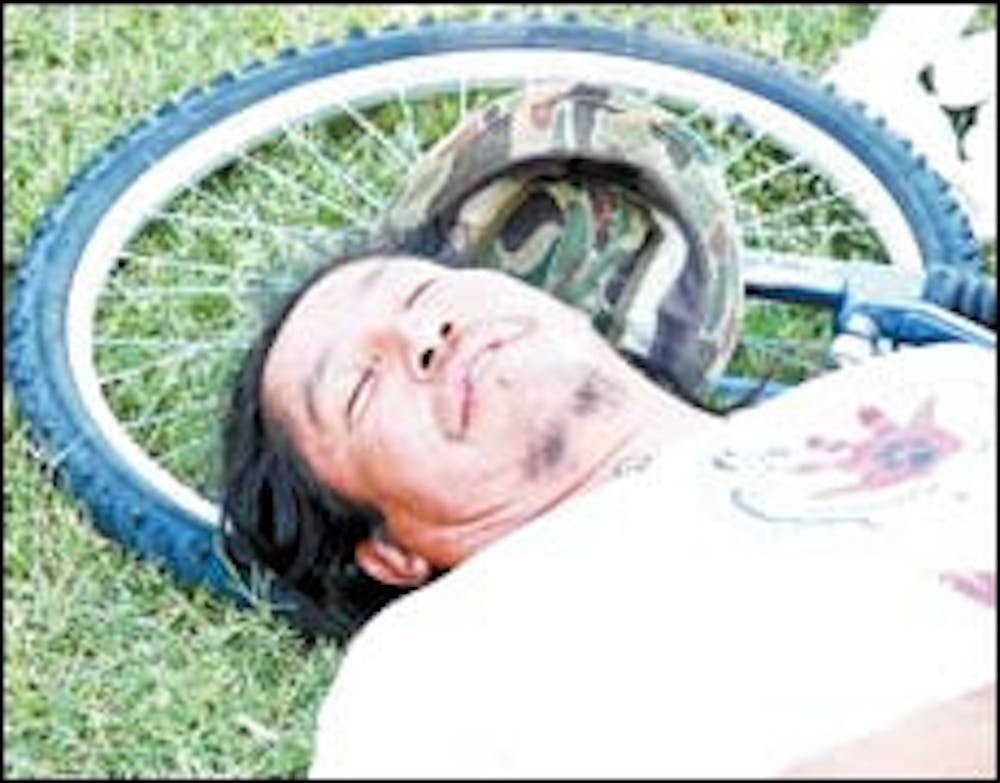On a hot afternoon in June, most people retreat inside. But some people don't have anywhere to hide from the oppressive summer sun.
Scooby, a member of Tempe's homeless population, sometimes stretches out on the grass at Escalante Park to deal with high temperatures.
"It's real tough if you don't have a place to stay with air conditioning," Scooby said.
He sat with Wolf, his street companion of nine years.
"Summer's not too bad, until it hits triple digits," Wolf said. "That's when I cook."
Tempe's homeless number as many as 500 people, according to a 2000 report released by a homelessness task force in Tempe. The summer heat presents a problem. Displaced people have the challenge of finding a place with shade or air conditioning, but won't kick them out.
Theresa James, Tempe's homeless and fair housing coordinator, said homeless people have few options of places they can go.
"They congregate in parks, wherever they can find shade," James said. "Anywhere, really. It's awful out there."
Scooby and Wolf said they spend a lot of time in parks, but noted that sometimes they aren't welcome. Police often chase them off, especially when other park visitors complain. Sleeping in parks can also be less than ideal, where exposed flesh is a free meal for ants.
"A lot of them find refuge inside," said Jana Smith, case manager at Tumbleweed Tempe Youth Resource Center. "They'll hang out at Hayden Library, Tempe Library. They'll panhandle some money and go to ejoy café."
Tempe's social services run low on items people use to keep cool in the summer, James said.
"The agencies that serve the homeless have an increased need for bottled water, sunscreen, and hats," James said. "Things like that."
The Tumbleweed center has the same problem.
"We desperately need bottled water," Smith said. "We go through water like it's… well, like it's water."
Smith said homeless people sometimes find they have to move around to find a place to stay.
"They'll find creative ways to get out of the heat," Smith said. "A lot of them will 'couch surf' during the summer, kind of hopping from house to house and friend to friend."
Scooby said he refuses to panhandle for money and tries to think of ways to buy his admission into cooler surroundings.
"I try to work in the day, doing day labor and stuff, and save up enough money to get a hotel," Scooby said. "That takes care of a couple of days."
More distant travel is also an option, when practical, but both Smith and James said that emigration does not noticeably diminish the homeless population.
"There are some who migrate out of Arizona in the summer," Smith said. "Especially those who have train-hopped for a while. They'll come here during the winter and head east during the summer, following the climate.
"Less than half our clients are travelers," she added, noting that about three-fourths of those who are travelers actually leave.
Scooby and Wolf stick to Mesa and Tempe, doing what they can to survive.
"We get ice water at Circle Ks and stuff," said Scooby. "Some places still charge you for it."
Even the places that are initially helpful can grow weary of providing aid, he added.
"They get to see your face so many times they stop liking you," Scooby said.
Reach the reporter at jason.ludwig@asu.edu.






